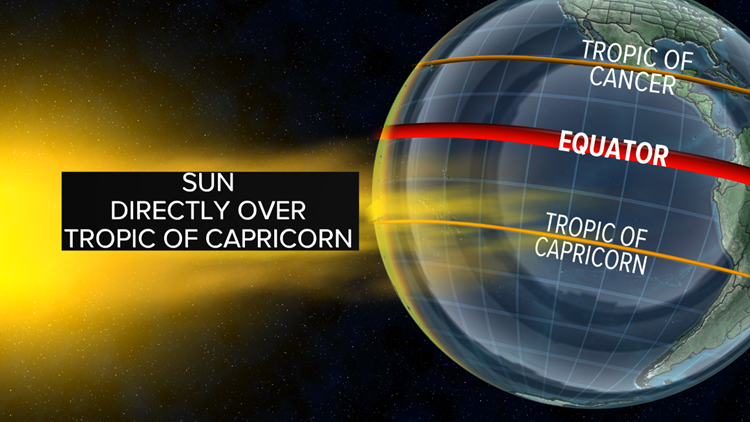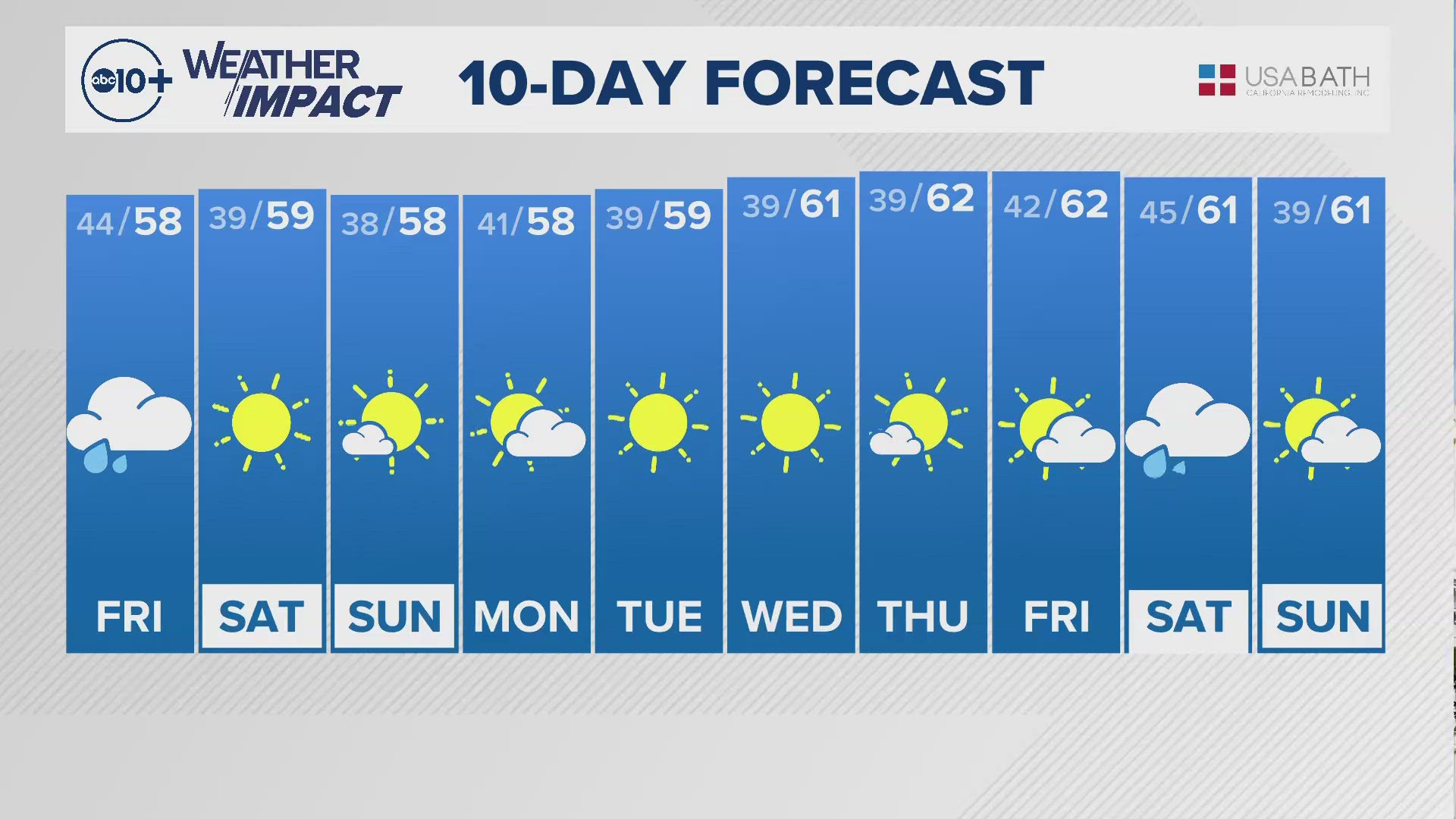Astronomical Winter or the Winter Solstice is Monday, Dec. 21 at 2:02 a.m. This is when the vertical rays of the sun hit Earth at the Tropic of Capricorn, south of the Equator.
This happens every year between Dec. 20 and 22. Since the sun’s rays are farther from the northern hemisphere, temperatures are typically colder. This is different than Meteorological Winter, which starts Dec. 1 every year.
In California, this also represents our wet season when more storms arrive from the Pacific Ocean. Even though we have winter-like weather in November and December, the Sacramento and San Joaquin Valleys average wettest months are still to come. January averages the most rain, followed by February and March.
In many parts of the northern hemisphere, Winter Solstice is the shortest day of the year. However, Sacramento's shortest day of sunlight is just a few days before because of the tilt of Earth. For example, sunrise and sunset on Dec. 20 are 7:20 a.m. and 4:48 p.m. respectively. On Dec. 21, we get a little more daylight with sunrise at 7:20 a.m. but sunset is one minute later at 4:49 p.m.
On the first day of winter, there are 24 hours of darkness north of the Arctic Circle. Conversely, there are 24 hours of light south of the Antarctic Circle. The Southern Hemisphere is also experiencing some of their warmest weather of the year.
The Vernal Equinox which is the start of Astronomical Spring is March 20, 2021 at 2:37 a.m.
WATCH ALSO:



